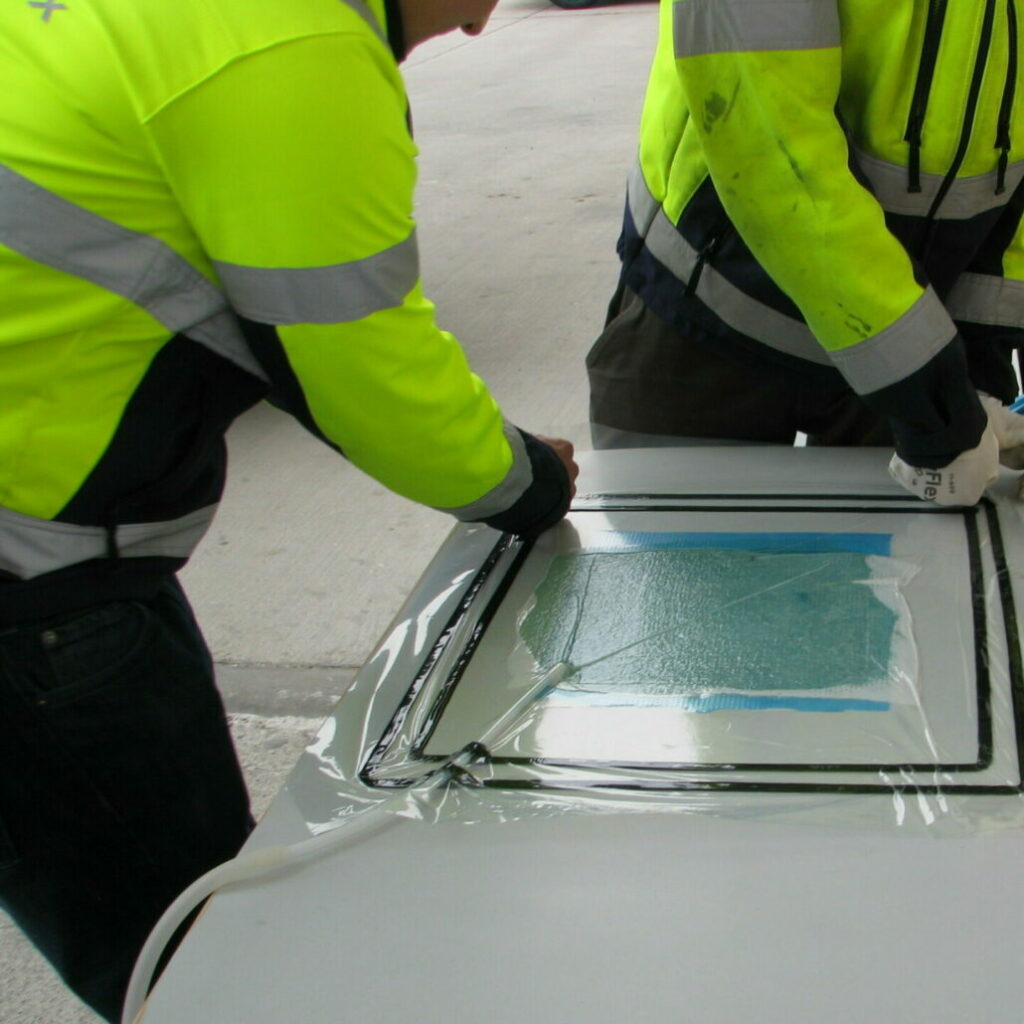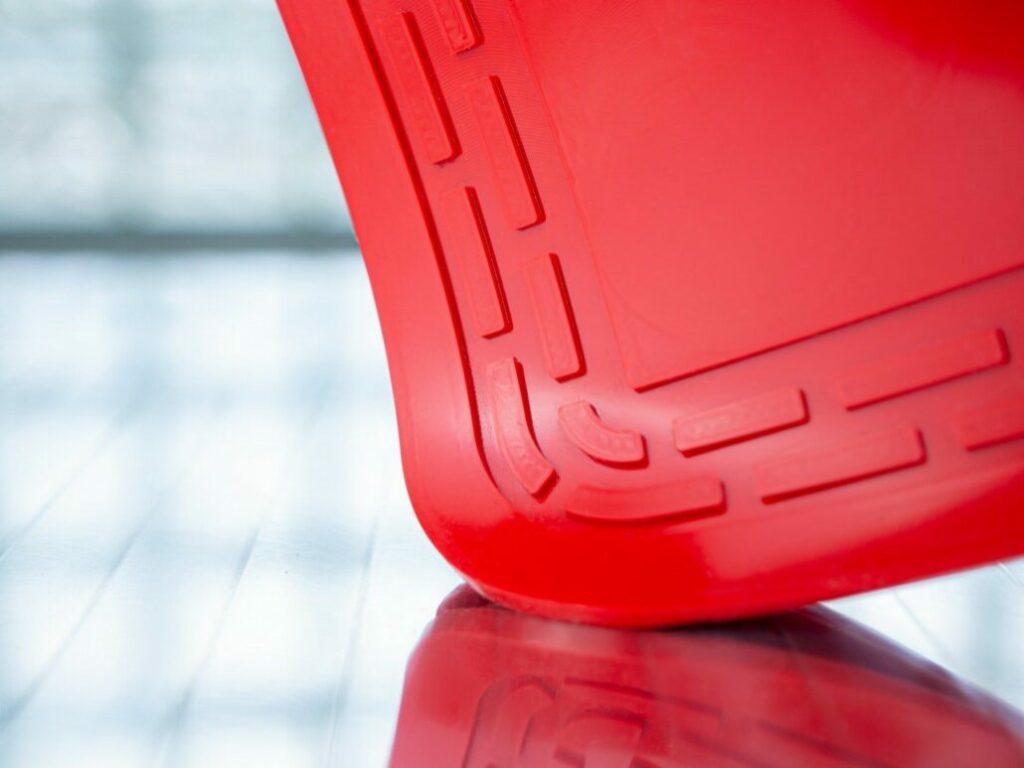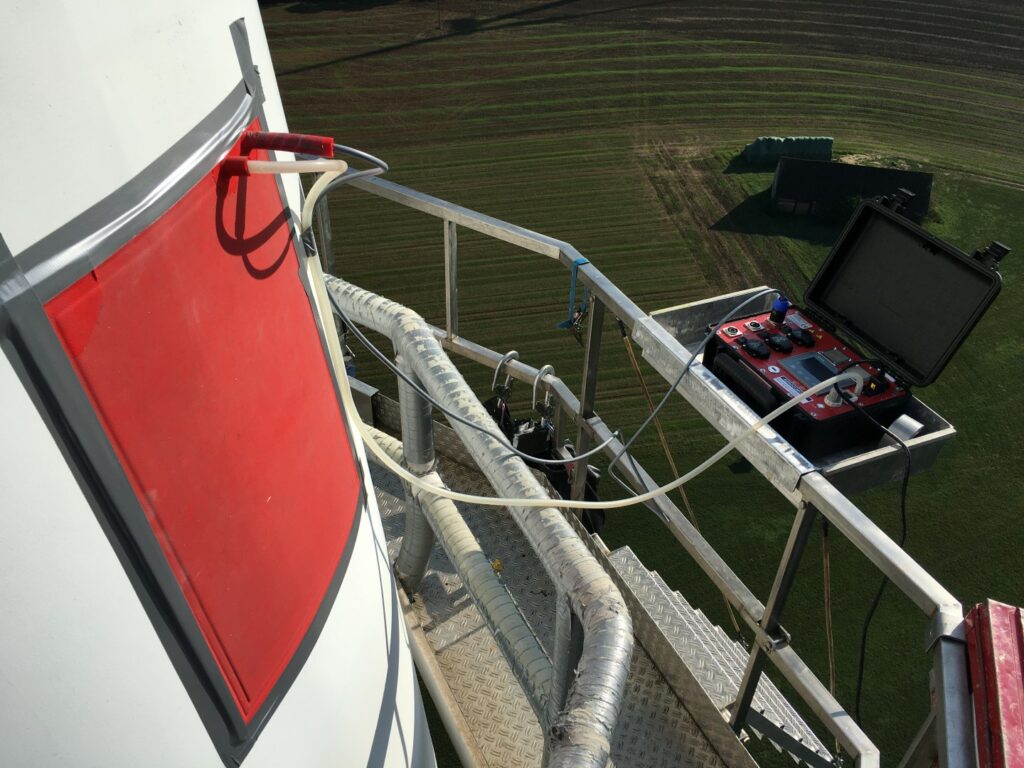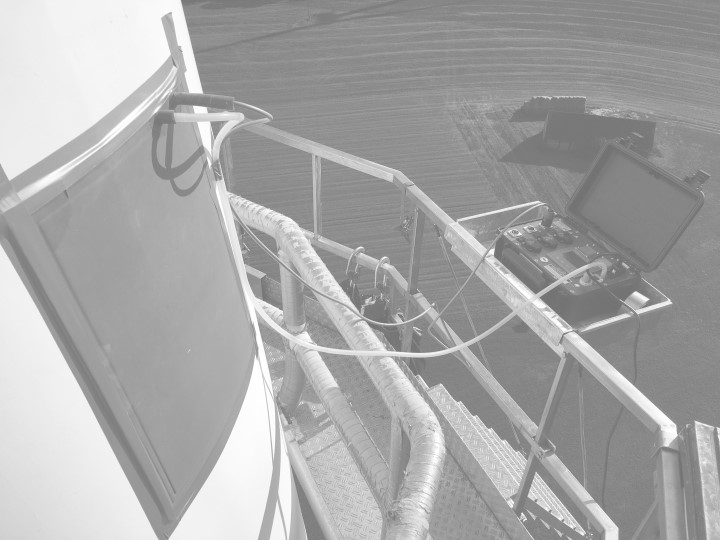What difference does it make whether composites are repaired under vacuum?
Almost all manufacturers’ repair manuals specify the use of vacuum for composite repairs. However, in this respect I remember a conversation with an experienced composite technician who has specialized in the repair of composite components for several decades and who firmly argues against the need for vacuum. “You can achieve a perfect repair result even without vacuum” – so his statement.
The fact is, anyone who has ever done a vacuum buildup knows that it sounds much easier than it actually is – because at the end of the day, it’s all about airtight sealing of the area to be repaired.
I already had the chance to assist a CFRP repair. But, as you would expect, as a complete beginner I had to struggle even more with the pitfalls of vacuum bagging and was surprised how the air finds its way through the most tiniest folds in the vacuum bag.
With these experiences in mind I show greatest respect for those who are handling vacuum build ups every day, applying the tape and sealing the bag with perfected dexterity. I was amazed how technicians master this. Thank you for these insights into your work.

msquare heating blankets supersede the conventional vacuum bagging
Shouldn’t it be possible to repair composites without the time-consuming vacuum build-up? The vacuum heating blankets from msquare have been exactly developed for this purpose: They allow for repairing or curing composite under vacuum conditions without creating a separate vacuum setup.
How does it work? Channels are incorporated into the border of the silicone heating blanket and the surface of the heating blanket also has a structure similar to a breather. A vacuum pump removes the air below the blanket whilst the edges of the heating blanket form an airtight seal and the pressure ensures that the materials are well pressed together. The repair takes place under vacuum conditions without creating a separate vacuum build-up in the conventional sense. This not only saves valuable time but also consumables and, above all, it is so easy to handle.
Due to the remarkable flexibility of the msquare heating blankets, even strongly curved composite structures which are often found in aviation or wind energy can be treated in this way. The heating blankets with vacuum function are available from a size of 30 x 30 cm – heated surface.

Successful use of vacuum heating blankets in extreme applications
The vacuum heating blankets have already proven themselves in many extreme applications. A user from the wind energy sector reports that the heating blankets with vacuum function were the only option – thanks to their easy handling – that made rotor blade repairs under extreme wind and weather conditions possible.
The vacuum heating blankets can also be used without hesitation for overnight repairs. A built-in temperature sensor ensures that any temperature fluctuations on the surface of the blanket are reliably compensated and a constant temperature is ensured during the whole repair process. The heating blanket is operated conveniently from a smartphone, tablet or PC using the easyHeat app.
Sounds interesting? We’d be happy to make your life easier, too – heating blanket and heating controller can be tested without obligation.

